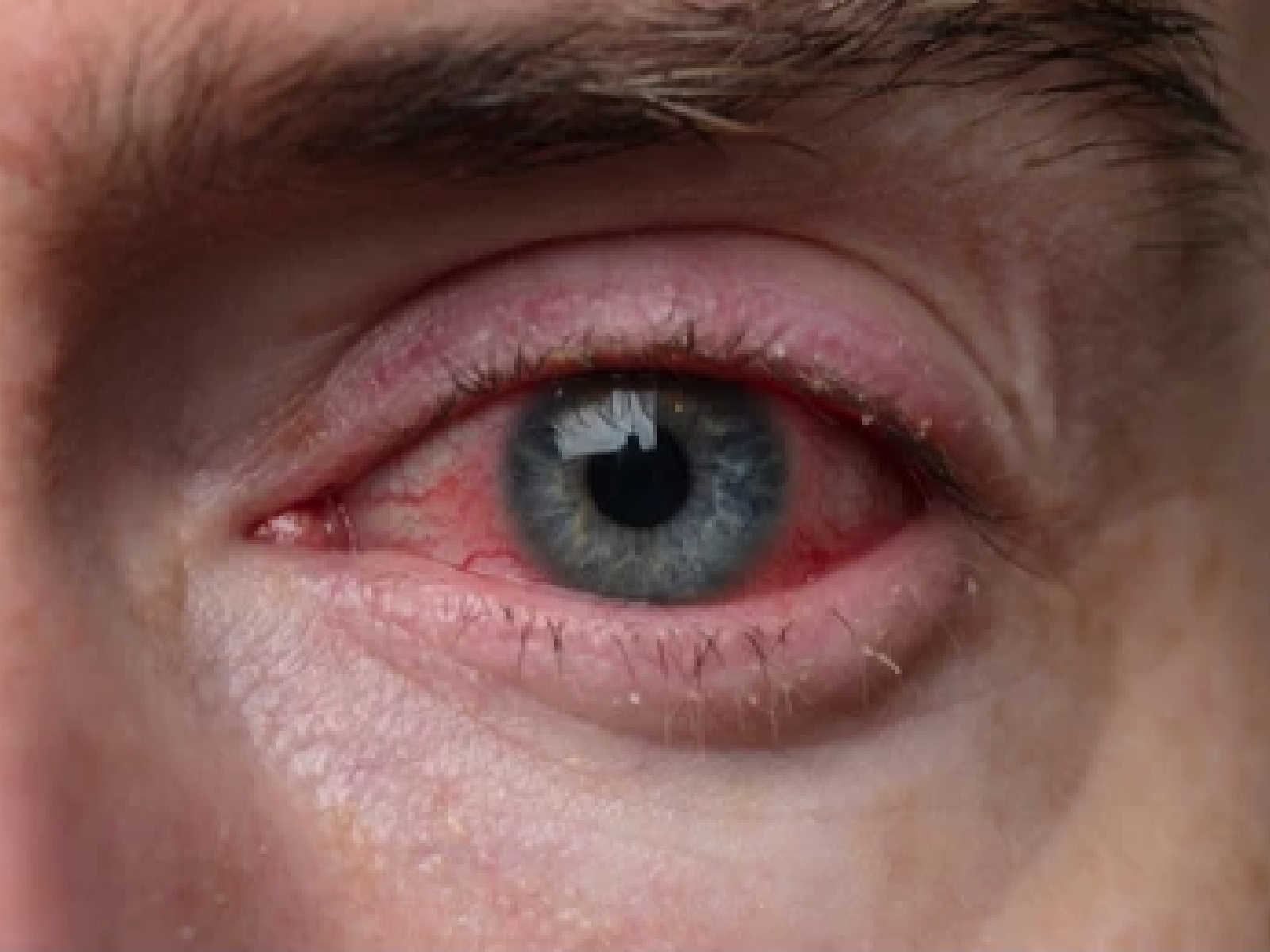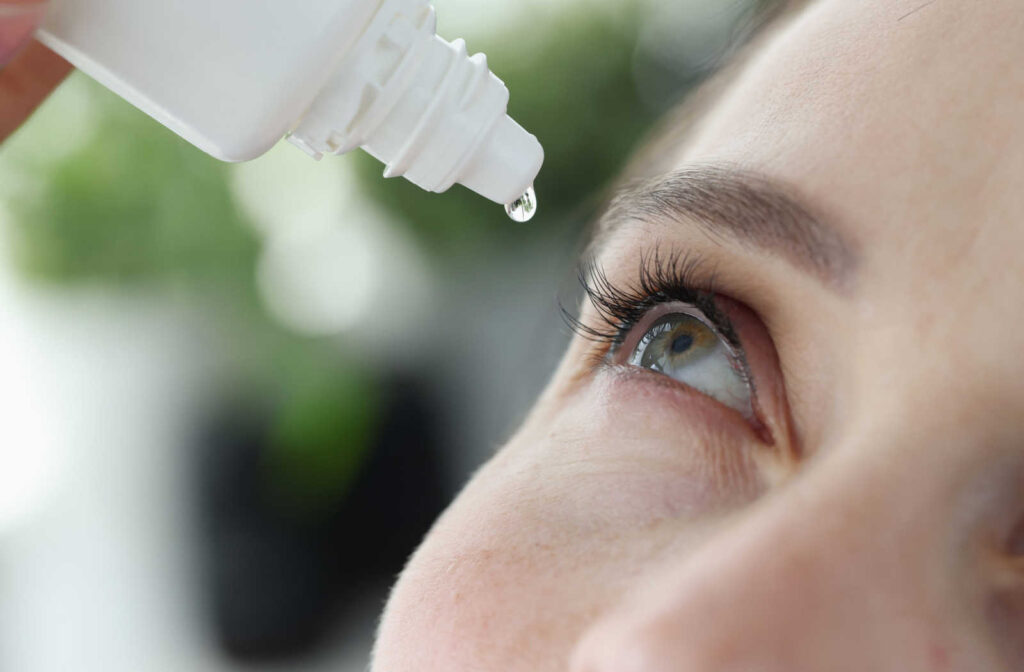When you experience red, irritated eyes, you may wonder what’s causing this reaction. A trip to the eye doctor can help if you’re unsure what’s causing your symptoms. Blepharitis and dry eye are common causes of red, watery, or tired eyes, but are these conditions the same?
Continue reading to learn more about blepharitis and dry eye, including if they’re the same condition and how your eye doctor can relieve your symptoms.
What Is Blepharitis?
Blepharitis is a common condition that can affect both eyes. It is inflammation of the eyelids, causing chronic symptoms that can affect your quality of life. Blepharitis isn’t a threat to your eye health, but it can be uncomfortable and persistent, leading to long-term irritation.
If you have blepharitis, your symptoms may be more severe in the morning—you may experience:
- Watery eyes
- Red eyes
- Gritty, burning eyes
- Itchy eyelids
- Red & swollen eyelids
- Flaky skin around the eyes
- Crusty eyelashes
- Eyelids sticking together
- Light sensitivity
- Blurry vision that improves with blinking
Blepharitis commonly leads to other eye-related issues, such as infections or eyelid problems. If you develop this condition, there may be several possible causes for your symptoms.
What Causes Blepharitis?
There are 2 types of blepharitis, anterior and posterior, and you can have them simultaneously.
Anterior blepharitis affects the outside portion of the eye, typically caused by bacteria on the skin or dandruff collecting from the scalp and eyebrows. Other possible causes include allergies or tiny parasites called mites, but these are less common.
Posterior blepharitis causes complications around the inner edge of the eyelid, the part of the eyelid directly touching the eye. This condition occurs when the oil glands in the eyelids (meibomian glands) become clogged or particular skin conditions irritate the eyelids.
The common cause of blepharitis is too much bacteria at the base of your eyelids, but other factors can affect your risk. You’re at a higher risk for blepharitis if you have the following:
- Dandruff
- Rosacea
- Oily skin
- Allergies affecting the eyelashes

Is Blepharitis the Same as Dry Eye?
No, blepharitis isn’t the same as dry eye, but these conditions can relate. Blepharitis and dry eye can have similar symptoms, making them seem like the same condition. The causes of blepharitis and dry eye are generally different.
Blepharitis mainly occurs due to excess bacteria around the eyelids, while dry eye can have several possible causes. In fact, blepharitis can be a possible factor related to dry eye development.
Previous research found that when the meibomian glands experience inflammation, this can be because of blepharitis. Meibomian gland dysfunction occurs when these glands become blocked or clogged, leading to dry eyes.
What Is Dry Eye?
Dry eye is a common, typically chronic condition where your tears cannot effectively hydrate your eyes. When this happens, the eyes become dry, irritated, and uncomfortable.
You may experience several symptoms if you have dry eyes, including the following:
- Eyes that sting or burn
- Stringy mucus in or around the eye
- Light sensitivity
- Eye redness
- Foreign object sensation
- Difficulty wearing contact lenses
- Watery eyes
- Blurry vision
- Eye fatigue
While several factors can relate to dry eyes, the common cause of this condition is a problem arising in the tear film.

What Causes Dry Eye?
Dry eye occurs due to problems with your tear film, 3 essential layers for creating the tears that spread across your eye when you blink. These layers are mucus, water, and oil, each serving a unique role:
- Mucus helps keep tears on the eye’s surface & spreads them evenly.
- Water provides hydration & protection, washing away bacteria & debris.
- Oil comes from the meibomian glands, preventing your tears from evaporating too quickly.
You can experience issues in one or more of the tear film’s layers, leading to dry eye symptoms. While this condition occurs because of problems in the tear film, different factors can affect dry eye development. Possible causes of dry eye include:
- Age
- Medical conditions
- Medication use
- Desensitized corneal nerves
- Posterior blepharitis
- Infrequent blinking
- Eyelid problems
- Eye allergies
- Wind, smoke, or dry air
- Vitamin A deficiency
While dry eye can have many potential causes, your eye doctor can help relieve your symptoms and improve your comfort.
Treat Blepharitis & Dry Eye with Your Eye Doctor’s Help
While blepharitis and dry eye are different conditions, they’re both treatable. Blepharitis is commonly treated with improved eyelid hygiene, eye drops, or medications prescribed by your eye doctor.
Dry eyes can be complex depending on their cause, but your eye doctor has several treatments available. They’re here to help, no matter the eye problem you experience.
Contact your eye doctor if you have symptoms of blepharitis or dry eye. They can diagnose and treat eye conditions as early as possible, helping relieve your symptoms.


